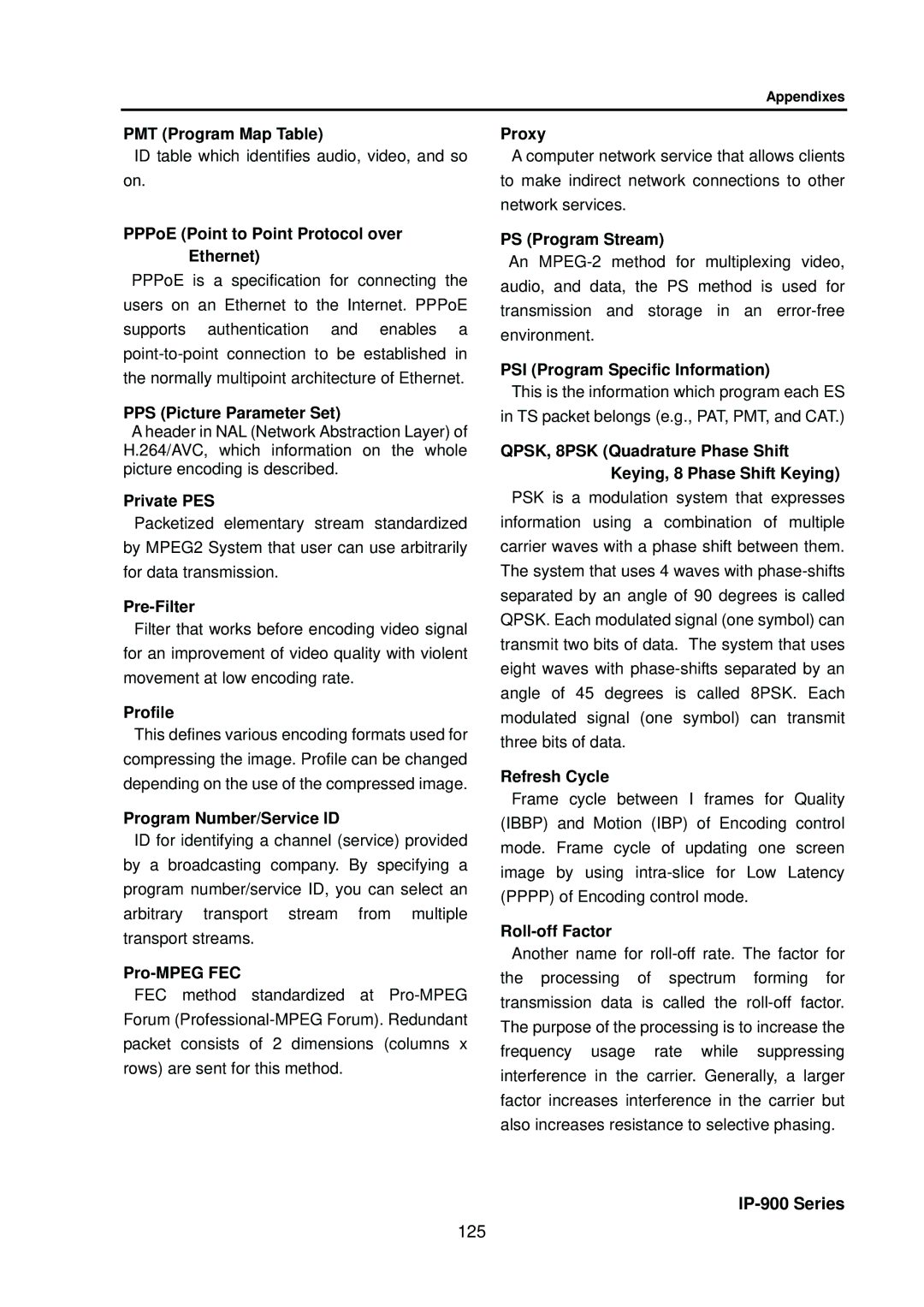Appendixes
PMT (Program Map Table)
ID table which identifies audio, video, and so on.
PPPoE (Point to Point Protocol over Ethernet)
PPPoE is a specification for connecting the users on an Ethernet to the Internet. PPPoE supports authentication and enables a
PPS (Picture Parameter Set)
A header in NAL (Network Abstraction Layer) of H.264/AVC, which information on the whole picture encoding is described.
Private PES
Packetized elementary stream standardized by MPEG2 System that user can use arbitrarily for data transmission.
Pre-Filter
Filter that works before encoding video signal for an improvement of video quality with violent movement at low encoding rate.
Profile
This defines various encoding formats used for compressing the image. Profile can be changed depending on the use of the compressed image.
Program Number/Service ID
ID for identifying a channel (service) provided by a broadcasting company. By specifying a program number/service ID, you can select an arbitrary transport stream from multiple transport streams.
Pro-MPEG FEC
FEC method standardized at
Proxy
A computer network service that allows clients to make indirect network connections to other network services.
PS (Program Stream)
An
PSI (Program Specific Information)
This is the information which program each ES in TS packet belongs (e.g., PAT, PMT, and CAT.)
QPSK, 8PSK (Quadrature Phase Shift Keying, 8 Phase Shift Keying)
PSK is a modulation system that expresses information using a combination of multiple carrier waves with a phase shift between them. The system that uses 4 waves with
Refresh Cycle
Frame cycle between I frames for Quality (IBBP) and Motion (IBP) of Encoding control mode. Frame cycle of updating one screen image by using
Roll-off Factor
Another name for
